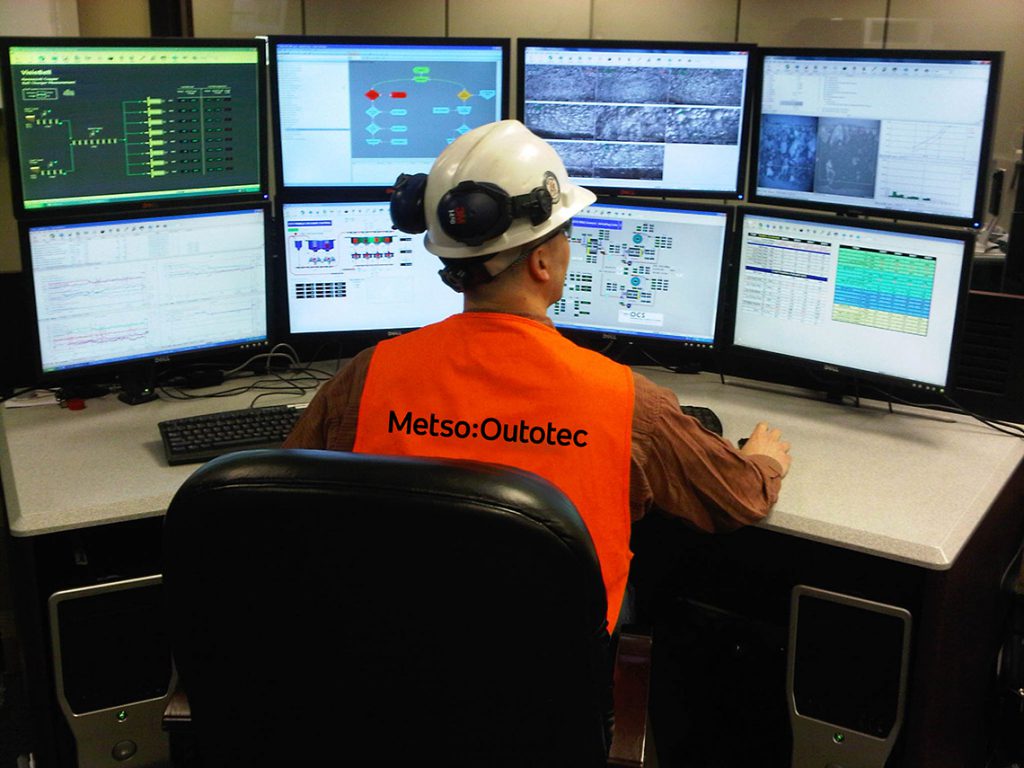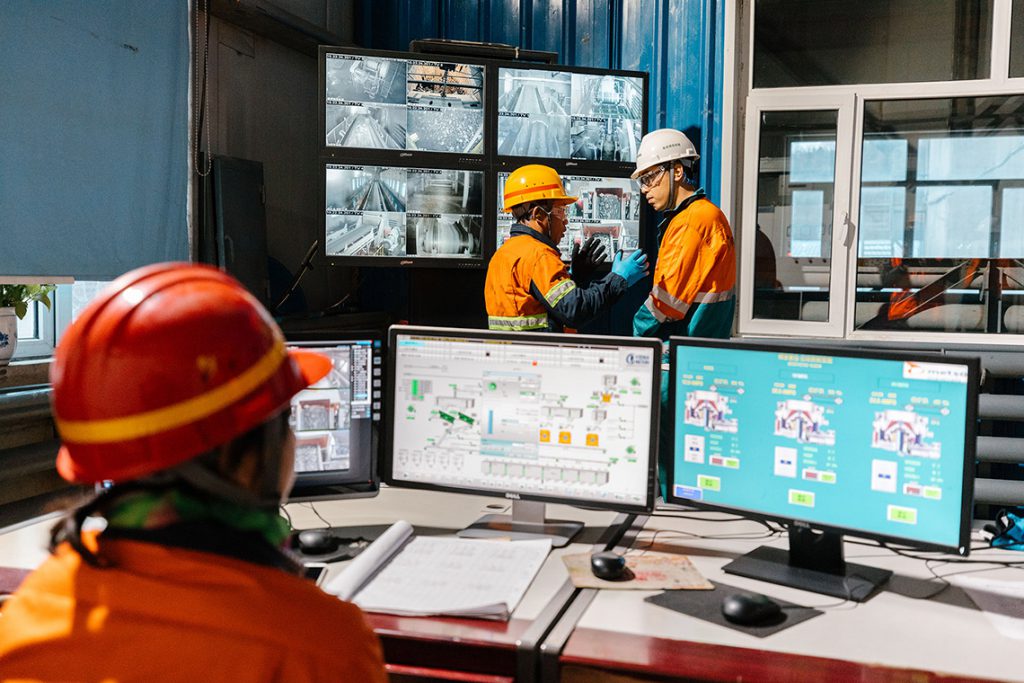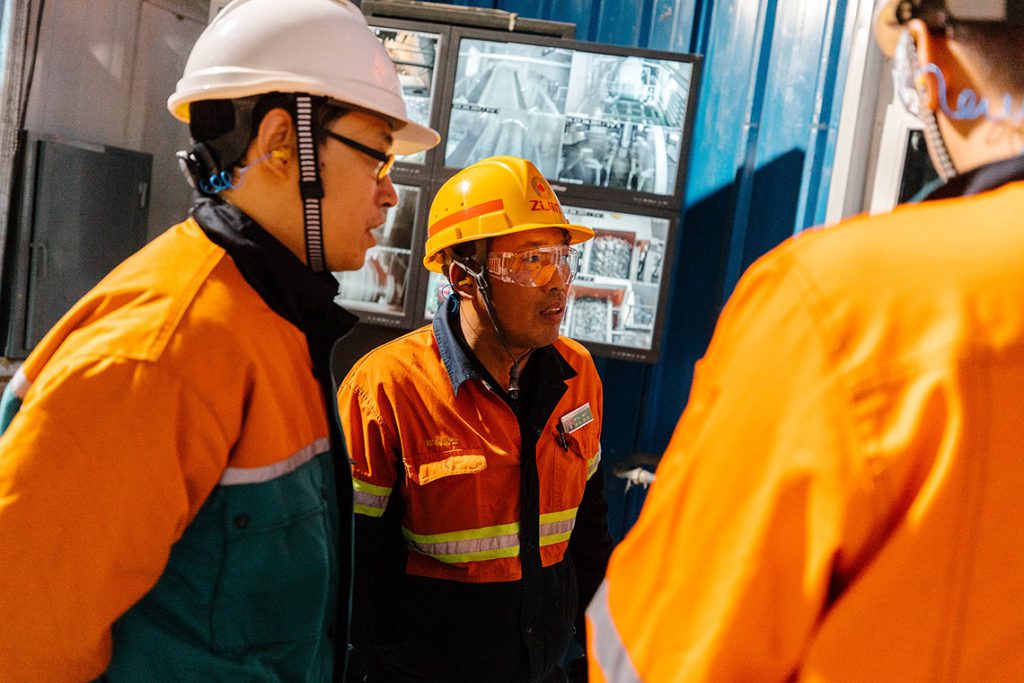Metso Outotec. Sustainability Focus: With ore grades changing, optimization of the value chain and flexibility of operations are key for a thriving mining industry
The demand for raw materials is changing, and production plants need to pivot to stay sustainable in the evolving market.
The industry is turning to automation, with more and more operations controlled remotely, leading to more reliable processes and a safer work environment.

A key question is: How can miners best ensure sustainability in these challenging times?
“Sustainability for operations is formed by profitable operations, environmental safety and safety of the personnel, says Veli-Matti Järvinen, Vice President, Automation & Digital Solutions, Metso Outotec.
“One of the drivers for automating the plants is the need to ensure people safety in challenging environments and extreme conditions. This, along with the need to ensure process efficiency and availability, leads companies to innovate in terms of how to run and adjust the processes in new ways,” Järvinen says.

For mining companies, sustainability is tagged to the long-term preservation of their operations, meaning they need to be economically viable while operating in an environmentally and socially responsible manner.
Raw material needs are changing, with higher consumption driving demand and operations needing to develop and reduce their environmental footprint. Above all, this means effective water and energy use.
Electrification/ Digitization
“The electric world rush is hot on our heels, raising the pressure for raw materials production, with the uncontrollable growth of population and cities, affecting metals demand enormously,” says Daniel Gutiérrez Bunster,Global Director, Process Optimization, Integrated Service Solutions, Metso Outotec.
“We are 7.6 billion people in the world currently and world population is projected to reach 8.6 billion in 2030, 9.8 billion in 2050, and 11.2 billion in 2100,” says Gutiérrez Bunster. “With this trend and knowing that bigger cities are greener, the direct impact within construction business is the metals consumption.”
The problem, Gutiérrez Bunster points out, is that certain metals will become too expensive to extract, increasing the challenges of maintaining a sustainable process.
In addition, with ore grades changing, optimization of the value chain and variability of operations are key for a thriving mining industry.
Declining ore grades are affecting mining operations globally, as more complex ores require more complex and advanced processing.
The major challenge for the future of mining operations is the continuous improvements needed to handle the natural consequences of a mine life cycle in terms of production outcomes.
The key to face these natural effects, common in older sites, is finding solutions to sustain and grow long-term production,with a push towards centralized efforts when it comes to throughput enhancement.

Does mining process management need to change?
Process management needs to be open to continuous improvement and change, and production value chain optimization should be seen holistically, Järvinen says.
“This requires open information flow, a willingness to change and careful planning on legacy equipment and processes integration. Supporting technologies are already established.“
“Major changes are continuously taking place and process management needs to be open to move with the same speed as the market,” Gutiérrez Bunster adds.
The pandemic has pushed companies to validate their business in terms of remote process operation and automation, and it has become evident they were not fully prepared for the changes.
How can Metso Outotec help companies pivot using Automation and Digitalization?
“Metso Outotec’s role as a thought leader is to facilitate a digital innovation ecosystem. Our vision is to provide this functionality by enabling access to our digital solutions for everyone, anytime and anywhere,” Järvinen says.
The company has one of the strongest portfolios in the market, giving it a powerful position in front of the competition. Not only its vast experience working in automation, but the wide global installed base in A&D in mining covering the whole process from the ore to the final product. This places Metso Outotec in an excellent A&D business position targeting efficiency, quality and environmental-safer customer solutions, Gutiérrez Bunster adds.
How can process automation help improve efficiencies?
An increase in levels of automation can help to achieve significant improvements in all fields of sustainability and process automation. Efficient process automation provides near real time information and feedback from the process, helping experts to determine trends and optimize the production process.
“Metso Outotec has the full capability to design and deliver process automation systems in connection with plant deliveries. Thanks to our extensive installed base and process expertise, our automation systems combine and enable the use of global best practices, benefitting our customers around the world,” says Järvinen.
“By utilizing modern technology, we can achieve processes with less disturbances, less rejection and more stability. The aim of process optimization is to get closer to an economic optimum throughout the process value chain. The technology is there, but what the customer needs is the process expertise,” concludes Järvinen.

Related webinar
Learn more about remote services and their role in equipment and process performanceby listening to Metso Outotec’s earlier webinar.
The topics in the webinar cover
- The common pitfalls of digitalization initiatives
- How remote services can take many forms
- Where to focus efforts and how to balance stakeholder expectations

Comments